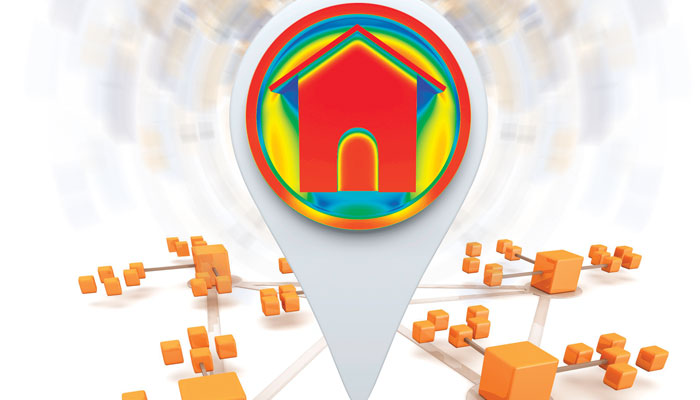New opportunities in connectivity and whole-home contracting
Adaptability is an essential characteristic that companies must have in order to stay on top in fuel delivery and indoor comfort.
Big changes just keep coming, including new preferences in energy sources; new ways of analyzing home energy use; and the “Internet of Things,” which features remote control of heating and cooling equipment via smartphones and smart thermostats.
While these “meta” changes are disrupting the entire status quo, energy marketers are also navigating a host of smaller-scale technology shifts that affect business processes, including online marketing, customer relations, dispatch and delivery, equipment sales, and more.
Maintaining the status quo in company operations becomes riskier every year, because many of these changes represent threats to companies that do not adapt successfully. Many energy marketers have already lost hundreds of accounts to natural gas, and they need find new business elsewhere while limiting any damage from emerging threats.
Company leaders must find some time to stand back from the day-to-day fray and take stock of where they are and where they are headed. It’s important to understand the changes that are occurring, prepare for the future, and decide how to retool services and product lines to capitalize on new opportunities. Let’s take a look at some of the important changes that are happening and consider the keys to continuing success in home comfort and energy marketing.
Connectivity
As 2015 opens, connectivity is an amorphous concept that hasn’t gained a lot of traction, but given its strong alignment with the aspirations and expectations of young homebuyers, it has the potential to become a major competitive differentiator within a few years.
Connectivity refers to the use of smart devices that feature specialized, built-in intelligence that enable them to perform tasks formerly handled directly by people, such as troubleshooting an appliance, switching on lights when a home is empty, and locking the doors.
Connectivity is also referred to as the “Internet of Things,” which was a major topic at the recent International Consumer Electronics Show (CES) 2015 in Las Vegas. The dominant player in these early stages is Google, which owns the Nest Learning Thermostat, after purchasing Nest Labs in 2014 for $3.2 billion.
The search giant is working to establish the Nest Learning Thermostat and the Nest Protect smoke alarm and CO2 detector as the core platforms for its “smart home” vision. Google has established the “Works With Nest” partner network to extend Nest-centric connectivity to appliances throughout the home. Partners such as LG and Whirlpool are working with Nest to enable remote control of their appliances.
Homeowners who embrace the vision will be able to tell if they have left the oven on accidentally and switch if off through a smartphone. When they leave the house, their Nest thermostat can signal their LG fridge to switch to energy-saving mode. The thermostat will automatically switch from away mode to home mode when the August Smart Locks door lock is opened. “Smart home promoters describe options like garage-door openers that send a message to users if left open, ceiling fans that slow down when residents go to sleep, and lights that turn on when a door with a smart lock opens,” The Wall Street Journalwrote last month.
Extended connectivity looks rather gimmicky today, but given its heavyweight sponsors it could solidify within a couple of years and gain widespread acceptance. Electronics manufacturer Samsung has announced that all its products will be Internet-ready within five years. Navigant Research predicts sales of “smart” thermostats will increase from $86 million in 2013 to $1.4 billion in 2020. The market research firm Parks Associates recently estimated that U.S. shipments of smart home devices would increase from 20 million units to 36 million units between 2014 and 2017, with 13 percent of households with broadband owning at least one device.
Google wants Nest devices in homes everywhere, and this raises the all-important question of who is installing them. Nest sells directly to consumers for DIY installation but also sells to contractors and offers certification as a “Nest Pro.”
It makes great sense to attain “Nest Pro” status – for several reasons. First and foremost, if you are part of the Nest team, you are playing with Google on the “smart home” initiative instead of against them. You are also grabbing a seat at the connectivity table, which could lead to becoming an authority on the connected home. While you’re at it, reach out to Honeywell about its new Lyric thermostat, which plays in the same space, but with a company that many contractors know well.
Once you are onboard with Nest and Honeywell, it makes sense to promote their thermostats aggressively on your website and in all other customer communications, particularly social media. Of the many good reasons to do this, the best one is that you can take the work away from another purveyor, such as the cable TV company or the gas utility. That means they will not get into your customers’ homes to discuss energy conservation – and threaten your relationships.
At the same time, you’ll be associating your brand with home connectivity, which can only help as you cultivate your image as a cutting-edge provider.
Over the next few years, it makes sense to invest in training and new hires to improve your company’s expertise in connectivity and customer data delivery. Electronics have proliferated in home comfort appliances and components, so it makes sense to employ all the electronics expertise you can afford.
A surfeit of electronic skills might also position you to capitalize on new opportunities in “smart home” contracting, as the field matures. If homeowners are indeed going to purchase various connected systems that may require expert installation and support, service opportunities will proliferate. No class of company is currently better positioned to meet those needs than home comfort companies that are widely trusted by local homeowners.
Whole-Building Analysis & Contracting
Like connectivity, whole-building analysis and contracting is a discipline that could capture the hearts and minds of residential and commercial customers. The idea of addressing energy consumption as a function of the whole house or building – and not just the heating and cooling equipment – is simply too sensible to ignore. It doesn’t take an Einstein to figure out that a leaky outer shell contributes to energy waste, which means there is risk to any company that tries to ignore the topic while selling high-efficiency equipment.
A safer strategy is to position the company as a provider addressing the full range of conservation opportunities, but that is much easier said than done. It’s a huge leap from delivering fuel and servicing burners to auditing homes and installing insulation, and there is little assurance that energy auditing will ever become a profitable service. State and utility programs in many areas offer energy audits as free or subsidized services, so it’s hard to imagine turning a buck by doing it yourself.
On a pure cost analysis basis, building science looks like a loser, so why not ignore it and let someone else beat their head against that wall? Self-defense: That’s why. Your close customer relationships are the key to your success, and it is unwise to leave openings for any interlopers. A home energy auditor who is not affiliated with your company is a very serious threat to the energy marketer relationship, because they might influence the customer – to switch fuels, to purchase new equipment or to replace you altogether. If whole home analysis gains momentum and mindshare, no home comfort contractor will want to be on the outside looking in.
To keep your customer relationships as exclusive as possible – and do more business within your customer base, not less – you need to position yourself as the full-spectrum energy expert, and that includes the audit. The sooner you can reach out to customers proactively and offer some kind of whole-home analysis, the better your chances of expanding your existing relationships. You can train and hire to provide the services yourself or partner with a local provider on specific terms regarding who is to perform the recommended work.
Take a similar approach with sealing and insulation services. The best way to protect accounts and increase profits is to meet your customers’ every energy-related need. Services that repair and improve the building’s outer shell are not subsidized as deeply as home energy audits, so you should be able to price them for profit.
If you can’t provide the services yourself, forge relationships and position yourself as an energy efficiency general contractor that delivers the whole package with the help of subcontractors.
Energy Conservation
Reducing fossil fuel consumption is a high priority for many in the new generation of homeowners, and energy marketers need to support and enable this powerful desire, or they risk becoming irrelevant.
The “get off oil” movement is an existential threat to companies that are highly dependent on oil sales, so it makes sense to diversify your services and put energy conservation and emissions reduction at the core of your value proposition.
Can you both sell fossil fuels and satisfy customers who want to get off them? It’s a challenge, for sure, but many energy marketers are adept at change and can find a formula that works. The key is to emphasize energy conservation and emissions reduction in your marketing and get good at pitching some outside-the box ideas.
For instance, you can promote the idea that reducing fossil fuel usage is as valid an environmental goal as “getting off oil.” If a homeowner buttons up their home and upgrades to a high efficiency system, they might be able to slash fossil fuel usage to such a degree that they will feel satisfied. For every cynic who would scoff at the idea, there are probably two or three levelheaded centrists who would welcome it.
If you can’t sell them a new boiler or furnace and maintain some fuel sales, maybe you can simply tighten up the home and sell them a heat pump. It’s a less than ideal answer for a fuel-centric business, but at least you’d get some sales and maintain a service relationship.
This approach has one tremendous strength: You will be positioning your company as a provider for every class of customer and not just for homes that heat with oil or propane, because most everybody wants to save on energy.
The Image You Project
While you’re thinking ahead, try to imagine your company five or 10 years from now. What will your value proposition be? How will you convey that to your market? Consider the image the company projects today, and plan to evolve that to align with the aspirations of your target customers.
With the increasing proliferation of “smart home” devices, consumers will increasingly associate home comfort with sophisticated electronics. Companies that want to succeed at selling “smart home” services should begin morphing their marketing to place more emphasis on electronics and connectivity. Similarly, companies that want to expand their energy-related services to target the building shell should begin marketing that vision and educating homeowners about extreme energy savings.
A quick Internet search shows that there are virtually no contractors marketing a combination of connectivity and energy conservation services in today’s market, so the field is open. Maybe leaders will emerge from the energy marketing industry, where adapting to change is a well-honed skill.
If you’d like help making your bold dreams come true, PriMedia is ready to help. Simply contact me at 800-796-3342 or rrutigliano@primediany.com.





